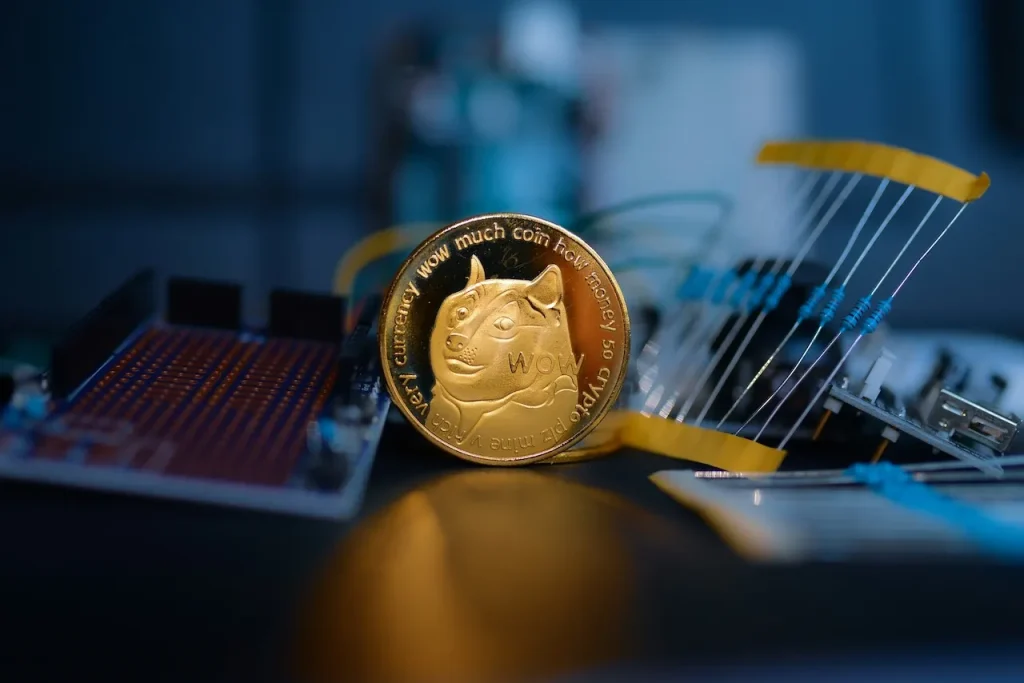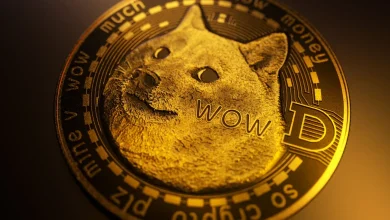Meme Coins vs. Utility Coins: What Should You Hold?

When it comes to cryptocurrency investing, the debate between meme coins vs utility coins is one of the most important decisions you’ll face. Meme coins are known for their viral popularity and explosive price movements, while utility coins provide real-world blockchain functions and long-term growth potential. This comprehensive guide explores the differences, benefits, risks, and investment strategies for both types of coins, helping you decide what you should hold in 2025 and beyond.
What Are Meme Coins? The Viral Powerhouses of Crypto
Meme coins are cryptocurrencies inspired by internet memes, jokes, or cultural phenomena. They often lack intrinsic utility but thrive on community hype and social media trends.
Key Features of Meme Coins
- Community-Driven: Their value depends heavily on social media buzz and viral marketing.
- High Volatility: Prices can skyrocket or crash rapidly.
- Speculative Nature: Many meme coins have no underlying technology or use case.
- Examples: Dogecoin (DOGE), Shiba Inu (SHIB), Pepe Coin (PEPE).
Why Investors Love Meme Coins
- Potential for massive short-term gains.
- Strong, passionate communities create a sense of belonging.
- Often fun and culturally relevant, making investing entertaining.
Risks of Meme Coins
- Lack of real-world utility makes them vulnerable to hype cycles.
- High risk of pump-and-dump schemes.
- Price crashes can be severe and sudden.
Case Study: Dogecoin’s Meteoric Rise and Volatility
Dogecoin began as a joke but exploded in popularity after endorsements from celebrities like Elon Musk. Its market cap once rivaled major corporations, but it also experienced wild price swings, illustrating both the opportunity and risk of meme coins.
What Are Utility Coins? The Backbone of Blockchain Ecosystems
Utility coins serve specific functions within blockchain networks, powering decentralized applications, smart contracts, and governance.

Key Features of Utility Coins
- Real Use Cases: They enable blockchain functionalities like DeFi, NFTs, and data oracles.
- Developer Support: Backed by active communities improving the technology.
- Institutional Interest: Increasingly adopted by businesses and regulators.
- Examples: Ethereum (ETH), Chainlink (LINK), Uniswap (UNI).
Why Utility Coins Are More Stable
- Demand is driven by actual usage rather than hype.
- Often have mechanisms like staking that encourage holding.
- More likely to survive regulatory scrutiny.
Challenges of Utility Coins
- Complex technology can be hard for beginners to understand.
- Growth is steady but less explosive than meme coins.
- Regulatory oversight can impact price.
Case Study: Ethereum’s Role in DeFi and NFTs
Ethereum powers thousands of decentralized applications and the booming NFT market. Its utility drives sustained demand, making it a core asset for many investors.
Meme Coins vs Utility Coins
| Feature | Meme Coins | Utility Coins |
|---|---|---|
| Purpose | Entertainment, hype | Real blockchain functions |
| Examples | Dogecoin, Shiba Inu, Pepe Coin | Ethereum, Chainlink, Uniswap |
| Value Driver | Social media, celebrity endorsements | Adoption, technology, innovation |
| Use Case | Speculative trading, tipping | Smart contracts, DeFi, governance |
| Volatility | Extremely high | Moderate to high |
| Community | Meme-driven, viral | Developer and business-focused |
| Longevity | Often short-lived | More sustainable |
| Risk Level | Very high | Moderate |
Why Do Investors Choose Meme Coins Over Utility Coins?

Quick Gains vs Long-Term Vision
Meme coins offer the allure of rapid profits, feeding FOMO (fear of missing out). Utility coins require patience and belief in blockchain adoption.
Culture and Community
Meme coins tap into internet culture and humor, creating emotional bonds. Utility coins attract technical and institutional communities.
Hype as Utility
In crypto, attention is currency. Meme coins’ viral nature makes hype itself a form of utility, driving price action.
Investment Strategies: What Should You Hold?
Holding Meme Coins
- Best for risk-tolerant investors seeking speculative gains.
- Should be a small part of a diversified portfolio.
- Requires active monitoring due to volatility.
Holding Utility Coins
- Ideal for long-term growth and blockchain innovation believers.
- Can be a core portfolio holding.
- Benefits from staking and ecosystem growth.
Balanced Approach
Many investors combine both, holding utility coins for stability and meme coins for potential high returns.
Risks and Rewards: What You Need to Know
| Risk/Reward | Meme Coins | Utility Coins |
|---|---|---|
| Potential Returns | Very High | Moderate to High |
| Risk of Loss | Very High | Moderate |
| Market Manipulation | Common | Less Common |
| Regulatory Risk | Lower scrutiny but uncertain | Higher scrutiny |
| Community Support | Very Strong | Strong but technical |
Future Outlook: The Evolution of Meme and Utility Coins
- Meme coins will continue to emerge with internet culture but may struggle with sustainability.
- Utility coins are expected to grow with blockchain adoption in finance, supply chains, and governance.
- Layer 2 solutions and interoperability will enhance utility coins’ scalability.
Case Study: Shiba Inu’s Journey from Meme to Utility
Shiba Inu started as a meme coin but has since launched its own decentralized exchange and NFT platform, adding utility and extending its lifespan.
Advanced Investment Strategies for Meme Coins vs Utility Coins

Investing in cryptocurrencies requires more than just choosing between meme coins vs utility coins. Advanced strategies can help optimize returns and manage risks.
Dollar-Cost Averaging (DCA)
DCA involves investing a fixed amount regularly, regardless of price. This strategy reduces the impact of volatility, especially useful for meme coins with wild price swings.
- Example: Investing $100 weekly into a mix of meme and utility coins smooths out entry prices over time.
Swing Trading vs HODLing
- Swing Trading: Capitalizing on short- to medium-term price movements. More common with meme coins due to their volatility.
- HODLing: Holding assets long-term, favored by utility coin investors who believe in blockchain’s future.
Portfolio Rebalancing
Regularly adjusting your portfolio to maintain desired allocations between meme coins and utility coins helps manage risk and lock in gains.
- For example, if meme coins grow to 30% of your portfolio but your target is 10%, sell some to rebalance.
Yield Farming and Staking
Utility coins often offer staking rewards or yield farming opportunities within DeFi protocols, providing passive income streams.
- Staking ETH: Locking Ethereum to secure the network and earn rewards.
- Yield Farming: Providing liquidity to decentralized exchanges for interest.
Meme coins rarely offer such mechanisms, limiting passive income potential.
Technological Innovations Shaping Meme Coins vs Utility Coins

The technology behind these coins influences their utility, adoption, and longevity.
Layer 2 Solutions and Scalability
Utility coins benefit from Layer 2 protocols like Optimism and Arbitrum, which enhance transaction speed and reduce fees, making dApps more usable.
Meme coins, often simple tokens, rely on the underlying blockchain but may suffer from high fees during congestion.
Cross-Chain Compatibility
Interoperability protocols like Polkadot and Cosmos enable utility coins to operate across multiple blockchains, expanding their use cases.
Meme coins are beginning to explore cross-chain bridges but lag behind utility coins in this area.
Smart Contract Upgrades
Utility coins are continuously upgraded to improve security and functionality, such as Ethereum’s transition to Proof-of-Stake.
Meme coins rarely undergo significant technical upgrades, relying mostly on community momentum.
Community Dynamics: The Heartbeat of Meme Coins vs Utility Coins
Community engagement plays a pivotal role in the success of both coin types.
Meme Coin Communities
- Highly active on social media platforms like Twitter, Reddit, and Discord.
- Organize viral campaigns, memes, and charity events to boost visibility.
- Examples: Dogecoin’s charitable donations and Shiba Inu’s NFT launches.
Utility Coin Communities
- Focused on development, governance, and ecosystem growth.
- Participate in protocol upgrades, bug bounties, and decentralized governance votes.
- Examples: Ethereum developers improving network scalability and security.
Impact on Price and Adoption
Strong communities can drive price rallies and adoption, but meme coin communities are more prone to hype cycles, while utility coin communities foster sustainable growth.
Tax Considerations for Meme Coins vs Utility Coins Investors
Understanding tax implications is crucial for crypto investors.
Taxable Events
- Selling or trading both meme and utility coins triggers capital gains tax.
- Using coins to purchase goods or services is also taxable.
Income from Staking and Yield Farming
Utility coin investors earning staking rewards or DeFi yields must report this as ordinary income.
Meme coin holders rarely have such income streams.
Record-Keeping Tips
- Maintain detailed transaction logs, including dates, amounts, and USD values.
- Use crypto tax software to automate calculations and reporting.
Regulatory Trends
Tax authorities worldwide are increasing scrutiny on crypto transactions, making compliance essential.
Case Study: Balancing Meme Coins vs Utility Coins in a Crypto Portfolio
Sarah, a 30-year-old investor, allocated 15% of her portfolio to meme coins like Shiba Inu and 70% to utility coins like Ethereum and Chainlink. She used DCA to manage volatility and staked her ETH for passive income.
- Over two years, her portfolio grew 120%, with meme coins providing explosive gains and utility coins offering steady growth and income.
- She actively rebalanced quarterly to maintain risk levels.
This case highlights the benefits of a diversified approach to meme coins vs utility coins.
The Environmental Impact: Sustainability in Meme Coins vs Utility Coins
Environmental concerns influence investor sentiment and regulatory policies.
Energy Consumption
- Utility coins like Ethereum have transitioned to Proof-of-Stake, drastically reducing energy use.
- Meme coins built on Proof-of-Work blockchains consume more energy, though many are on PoS-compatible chains.
Green Initiatives
Utility coin projects often emphasize sustainability, attracting ESG-conscious investors.
Meme coin projects are beginning to explore carbon offset programs but lag behind.
Emerging Trends: What’s Next for Meme Coins vs Utility Coins?
- Meme Coins: Integration with NFTs, gaming, and metaverse projects to add utility.
- Utility Coins: Expansion into enterprise blockchain solutions, decentralized identity, and Web3 infrastructure.
- Regulatory Clarity: Expected to favor compliant utility projects, potentially challenging meme coin growth.
- Institutional Adoption: Increasing for utility coins, with meme coins remaining primarily retail-driven.
Incentives and Economic Models in Meme Coins vs Utility Coins
Tokenomics—the economic design and incentive structures behind cryptocurrencies is a key factor differentiating meme coins vs utility coins.
Inflationary vs Deflationary Models
- Meme Coins: Many meme coins have inflationary models, with new tokens minted regularly to reward miners or incentivize community participation. For example, Dogecoin has no capped supply, which can lead to dilution over time. This inflationary nature can depress long-term price appreciation if demand does not keep pace.
- Utility Coins: Utility tokens often employ deflationary mechanisms such as token burning (e.g., Ethereum’s EIP-1559 burns a portion of transaction fees), capped supply, or scheduled reductions in issuance. These mechanisms create scarcity, potentially increasing token value over time.
Vesting and Lock-Up Periods
Utility coin projects frequently implement vesting schedules for team members and early investors to prevent sudden sell-offs that could destabilize prices. Meme coins often lack such formal structures, increasing volatility risks.
Incentive Alignment
Utility coins align incentives between network participants by rewarding staking, governance participation, and liquidity provision. This encourages long-term holding and active involvement in the ecosystem.
Meme coins primarily rely on speculative demand and community enthusiasm, with fewer formal incentives to hold long-term.
Ecosystem Partnerships and Integrations: Driving Growth in Meme Coins vs Utility Coins
The breadth and quality of partnerships significantly impact the adoption and legitimacy of cryptocurrencies.
Utility Coin Ecosystem Collaborations
Utility coins often form strategic partnerships with enterprises, developers, and other blockchain projects to expand use cases:
- Ethereum: Collaborates with major corporations through the Enterprise Ethereum Alliance, fostering adoption in finance, supply chain, and healthcare.
- Chainlink: Partners with data providers and DeFi platforms to deliver reliable oracle services.
- Polygon: Integrates with gaming and NFT projects to enhance scalability.
These partnerships drive real-world adoption and create network effects that support token value.
Meme Coin Collaborations
While meme coins are less focused on formal partnerships, some have begun exploring integrations:
- Shiba Inu’s NFT marketplace and planned gaming ventures aim to add utility and attract new users.
- Community-driven charity initiatives and sponsorships (e.g., Dogecoin’s support for sports teams) enhance brand visibility.
However, meme coin partnerships are generally less structured and more marketing-oriented.
Security Risks and Vulnerabilities in Meme Coins vs Utility Coins
Security is a critical concern for investors in both meme and utility coins, though the nature of risks differs.
Smart Contract Risks
- Utility Coins: Complex smart contracts underpin many utility tokens, especially those involved in DeFi. While enabling powerful features, these contracts can contain bugs or vulnerabilities exploited by hackers. Rigorous audits and formal verification are essential but not foolproof.
- Meme Coins: Typically simpler tokens with fewer smart contract functions, reducing some risks. However, meme coins can be susceptible to scams, rug pulls, or malicious contract code if developed hastily or without oversight.
Exchange and Wallet Security
Both coin types rely on exchanges and wallets for trading and storage, exposing investors to risks such as exchange hacks, phishing attacks, and wallet mismanagement.
Regulatory and Legal Risks
Utility coins face greater regulatory scrutiny due to their functional roles, which can lead to legal challenges or restrictions. Meme coins’ informal nature may attract enforcement actions if associated with fraud or market manipulation.
Market Cycles and Timing: Navigating Volatility in Meme Coins vs Utility Coins
Understanding market cycles helps investors manage risk and optimize entry and exit points.
Meme Coin Market Behavior
Meme coins often experience rapid boom-and-bust cycles driven by hype, social media trends, and speculative trading. These cycles can be unpredictable and extreme, with prices soaring and crashing within days or weeks.
Utility Coin Market Trends
Utility coins tend to follow broader crypto market cycles influenced by technological developments, adoption rates, and macroeconomic factors. Their price movements are generally less erratic but still subject to significant volatility.
Timing Strategies
- For meme coins, short-term trading or momentum investing may be effective but risky.
- Utility coin investors often adopt long-term holding strategies, focusing on fundamental milestones.
Investor Education and Due Diligence: Essential Practices for Meme Coins vs Utility Coins
Informed investing is crucial given the risks and complexities of the crypto market.
Researching Projects
- Examine the project’s whitepaper, roadmap, and development activity.
- Verify the credibility and experience of the team.
- Assess tokenomics, supply mechanisms, and incentive structures.
Community and Social Media Analysis
- Monitor social media channels and forums for sentiment and announcements.
- Beware of hype-driven misinformation or pump schemes.
Using Analytical Tools
- Employ blockchain explorers to track token transactions and holder distribution.
- Use portfolio trackers and tax software to manage investments and compliance.
Risk Management
- Diversify holdings across multiple projects and coin types.
- Set clear investment goals and exit strategies.
- Avoid investing more than you can afford to lose.
Conclusion
Your choice between meme coins vs utility coins depends on your investment goals, risk tolerance, and belief in blockchain technology. Meme coins offer excitement and rapid gains but come with high risk. Utility coins provide real-world value and longer-term potential but require patience.





